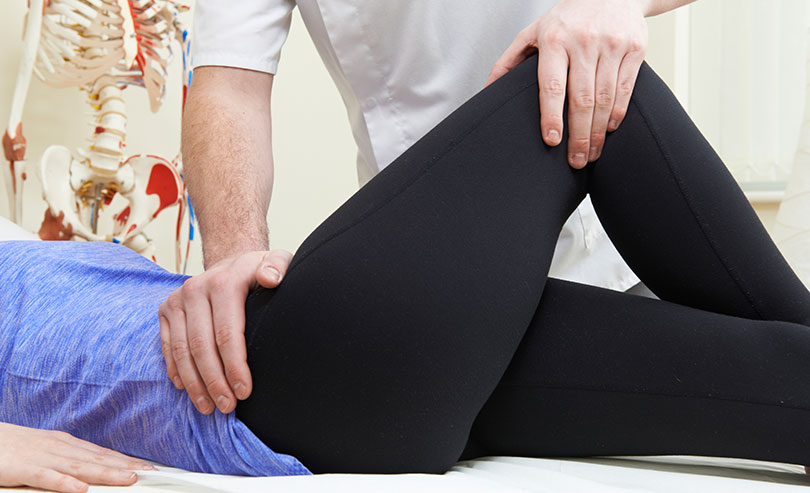Bladder Leakage When Coughing
It would be safe to assume that leaking while coughing is a normal thing for women by the time they reach early 30’s.
The commercials surrounding this issue show you that it’s okay, it's only a little pee, everyone does it, and to buy their product that is meant to protect you from unwanted leaks. Because if everyone does it, its got to be okay... right?
But do we know why we leak when we cough? And what if there was something you can do about it? Well, fortunately, there is, and it doesn't require any fancy products, medication, or devices (however may be helpful or necessary depending on each situation).
Why do I Pee When I Cough?
Stress incontinence is when you have a full or partially full bladder, and you do something to put pressure on it, and you lose some urine as a result. It is not a complete loss of bladder control.
A lot of people suffer from stress incontinence in the form of coughing and leaking.
When you start to cough, you hold your abdominal muscles clenched to brace yourself for the cough you’re about to have, because a cough has quite a bit of force behind it. This is a natural reaction, however leaking while coughing is an avoidable event.
The goal is to have your pelvic floor muscles contract with each cough to prevent leaking. But how do we do that?
How to Stop Urine Leakage When Coughing
It’s important to know that you have the power to control, or learn how to control, your pelvic floor muscles, and train them to do what you want.
This is not something you’re taught how to do after potty training because your body is naturally supposed to know how to do this. Most often it does, however, sometimes we can lose the ability to do it.
If it becomes a problem for you later in life, then that’s something you need to deal with on your own and to assume you’re the only one suffering from this issue. That is false and should never be taken for granted.
However, your physical and mental health is in your hands and how you treat your body and whether you accept this as normal or as a problem is something that is also up to you.
Prevention is key, so even if you don’t suffer from stress incontinence at all, knowing how to use your pelvic floor muscles is very important.
Pelvic Floor Exercises
Research shows some of the strongest evidence in fighting back against stress incontinence is pelvic floor muscle exercises.
You can find exercises online about how to retrain your pelvic floor. However, you can also see a pelvic floor physiotherapist, and gain more personalized help and techniques, which is a very beneficial thing to do.
Overall, what we want to accomplish is teaching your brain and your bladder to communicate in times such as coughing, what to do and what not to do.
Kegel Exercises
There is a technique commonly called “the knack” that is a simple well-timed Kegel exercise that you may perform before and during a cough. You must first be able to find your pelvic floor muscles.
Physiotherapy for OAB can help you retrain your bladder with targeted exercises and a schedule that suits your particular OAB discomforts.
To do that, imagine you are trying to stop the flow of urine, or passing gas. Your pelvic floor is like a hammock of muscles in your “sit” area that help close shut your urethra. When you imagine stopping a flow of urine, you should feel your muscles contract, or lifting, down there, and then you should have successfully located them.
Practice this and hold up your pelvic floor and then consciously let it go after about 3 seconds. Now when you feel a cough coming on, contract your pelvic floor muscles before you cough, so you are prepared for the downward force of it.
When done correctly, you will feel much less downward movement from the cough, as well as contracting these muscles will clam your urethra shut and keep away unwanted leakage.
You can always perform this technique in other occasions where you might suffer from stress incontinence such as sneezing, lifting, blowing your nose, rising from a seat, or even stepping down heavily.
The main thing though is knowing how to do it, practicing this technique, and remembering to do it before any of these actions. Of course, this is the easiest and simplest way of controlling stress incontinence while coughing, but it isn’t the only way.
Make Scheduled Bathroom Visits a Habit
Another action you may want to include in your everyday life is planning and tracking when you visit the washroom, as well as sitting on the toilet for a little longer to try and get everything out.
If you can make scheduled visits to the washroom every half hour or hour, you can avoid having a full bladder, one which might even get irritated from being full, but mostly to avoid leaking when coughing, or other stresses.
Practicing scheduled washroom visits can be beneficial, but not always convenient, which is why you should practice it as often as possible, as well as start lengthening the visits to increase the time between when you void.
This is not a form of urgency or frequency when it comes to OAB. However, it is in your control, and can help with unwanted urgency or frequency.
Sickness, Coughing and Bladder Leakage
Do not avoid coughing when you need to cough, especially when sick. This can result in a build-up of sputum, or phlegm, in the lungs, which is a combination of saliva and mucus, which can get caught in smaller airways and cause infection.
The Takeaway
Everything comes down to being prepared and exercising these helpful tips to help create a more enjoyable time when you need to go.
If you are practicing “the knack” when you need to cough, it won’t even be something you consciously need to do or practice anymore. It will become a habit, and you’ll notice less leaking and accidents. Your pelvic floor will be strong and ready for whatever life throws at it.
There isn’t always a convenient time to use the washroom, and it is quite unpleasant to leak. However, with a little practice, you can make something that we once considered normal and okay, a problem of the past.







